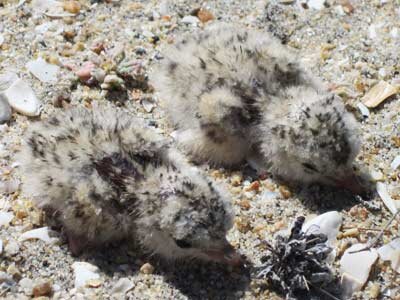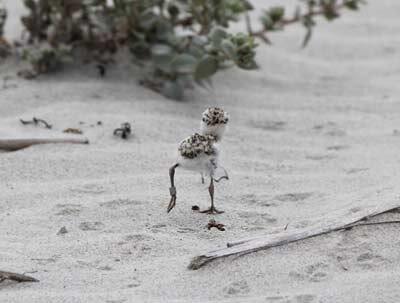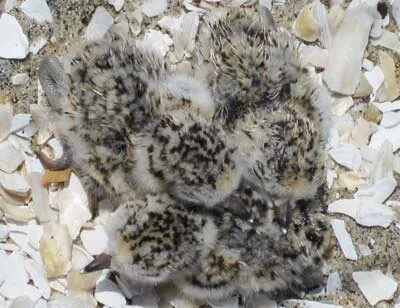Shorebird Nest Predation Study
Naval Base Coronado and Marine Base Camp Pendleton
IWS began work during the 2012 shorebird nesting season to protect two vulnerable species: the California Least Tern (Sterna antillarum browni) and the Western Snowy Plover (Charadrius alexandrinus nivosus).
The California Least Tern (“tern”) is federally listed as “endangered”. Efforts to recover this species have been successful, with a population increase from about 600 breeding pairs to well over 6000 pairs over the past 40 years. Unfortunately, there are still significant threats, due mainly to the finding that 70% of the breeding population nests at only 5 sites. Our study sites account for the highest densities of those nests. Threats to terns include: limitation and reduced quality of habitat, predation by native and non-native predators, human disturbance, and long-term factors such as food availability, disease and climate.
The Pacific Coast population of the Western Snowy Plover (“plover”) is federally listed as “threatened”, and is likely declining. Current population estimates are approximately half as large as the target in the Recovery Plan. Threats are similar to the terns, despite ongoing conservation efforts. Long-term management of the Pacific population of plovers will be required to allow for delisting.

California Least Tern chicks

Newly banded plover chick

Western Snowy Plover chicks
Predation
Predation of nests and nestlings by native and non-native predators remain a major area of concern for the recovery of both tern and plover populations. IWS is focusing on controlling and managing predator impacts on nesting terns and plovers in an effort to increase successful nests and overall nest productivity (surviving young). Our extensive experience with predator control has led to new methods for capture and monitoring of avian and mammalian predators.
We are approaching the predator control in ways that minimize the impact on native species. This includes trapping and translocating raptors (hawks, falcons, owls) at distances that would reduce the probability that they would return to prey on terns or plovers. We are investigating the use of taste aversion chemicals inside mimic eggs to educate ravens and crows to avoid feeding on tern and plover eggs. When possible, mammals are moved away from the beach nesting areas to locations where they would be less likely to return.
IWS is also working on a number of innovative techniques to deter predators from approaching the nesting colonies, in hopes of increasing nest success without having to control the predator populations. Developing these techniques will not only benefit threatened or endangered shorebirds nesting at these two installations, but could be applied at other locations as well.


